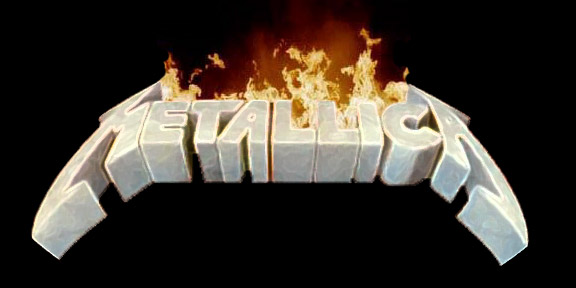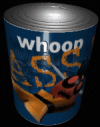
visits since March 28,1999


metallica is...

James Hetfield
Lars Ulrich
Kirk Hammett
Jason Newsted(click on member for bio)










Coming soon...gallery.

Sponsored by whoopASS
brand canned products.
"Open a can, today."
a brief chronological history...
1981 Lars Ulrich meets up with James "The Angriest Kid in the World." Hetfield. The pair form a band and call it Metallica. The other members include bass player, Ron McGovney, and lead guitarist, Dave Mustaine.
1983 After thoroughly getting sick of the wussy LA music scene, Metallica relocates to San Francisco so it can hook up with a new band member, bass genius Cliff Burton. The band then moves to New York, boots Mustaine and finds a new guitarist in Kirk Hammett. They record their first LP entitled Kill 'Em All.
1984 Metallica's much-awaited second album, Ride the Lightning, is released. The album begins with acoustic guitar, which quickly becomes a cliche for metal bands. With no help from commercial radio, Ride the Lightening goes gold and spends 50 weeks on Billboard's Top 200.
1986 Metallica's third release, Master of Puppets, redefines metal yet again. Master of Puppets sells a million copies in the U.S. alone, without the help of MTV.
Unfortunately, while touring Europe, Metallica's tour bus skids off a road in Sweden. Cliff Burton is killed. The busdriver blames black ice for the accident. Despite the anger and grief shared by the remaining members of the band, there is no doubt that Metallica will carry on. "Cliff would have been the first one to be pissed off if we didn't," says Lars. A new bassist is found in Jason Newsted and the hazing begins.
1987 Back in San Francisco, the band converts Lars' garage into a rehearsal room, records a handful of favorite cover songs, and releases them on the $9.98 CD: Garage Days Revisited (a.k.a., The $5.98 EP). In the summer, Metallica plays the Donington Festival, warming up with a gig at London's 100 Club. In the row is one John Paul Jones, Led Zeppelin's bass player, who after the gig is seen shaking his head and muttering, "I didn't know that sort of thing was possible...."
1988 Metallica's fourth LP, ...And Justice for All, is released in September. Sales skyrocket.. Metallica embarks on a world tour, including 120 arena gigs in the U.S. alone. All this without help from MTV or commercial radio, which is quite amazing. Metallica, testing uncharted waters, releases two singles--"Harvester of Sorrow" and "One"--as well as two different videos for "One."
1991 Metallica, the heralded fifth album that comes to be known as "The Black Album," is released. The album was produced by the legendary Bob Rock who is known for his work with Bon Jovi. The "Rock" community thinks that this is the most important thing to happen to Metallica. Too bad it isn't.
1996 The band announces their headlining status on this year's Lollapalooza festival tour. Load, the band's new album is released. Now, more than ever, people are labeling them as sell-outs. Metallica responds by saying, in effect, "We do what we want."
1997 The much anticipated sequel to Load is released, appropriately titled ReLoad. It shares much of the same feel of Load, as it has the same producer and the material was written at the same time. A free concert is given in Philadelphia to promote the album.
1998 Garage, Inc. is released. This 2-cd compilation consists of a cd that has previously recorded cover tunes-from Garage Days Revisited as well as other sources, and a cd with newly recorded cover tunes. No one does it quite like Metallica.